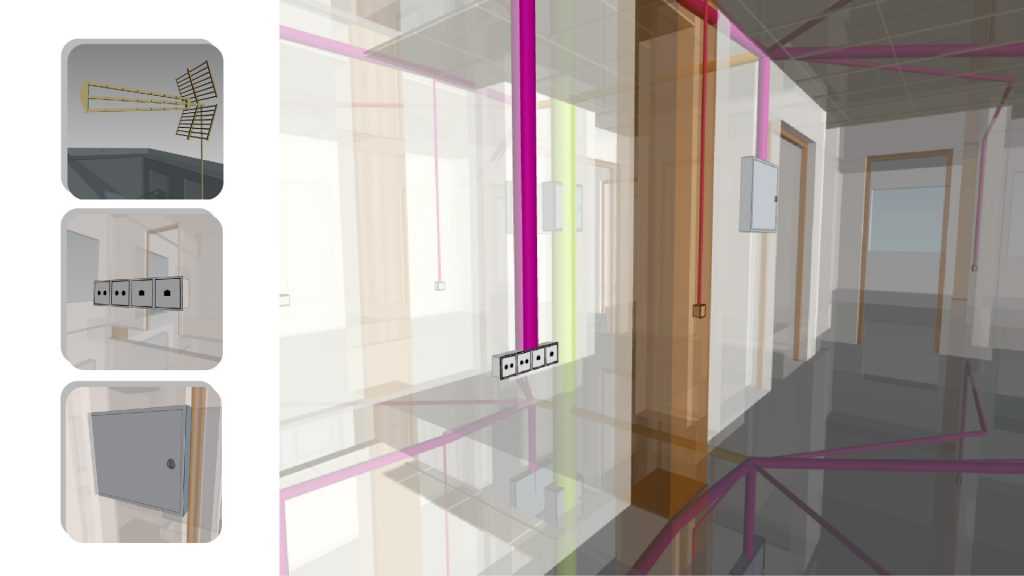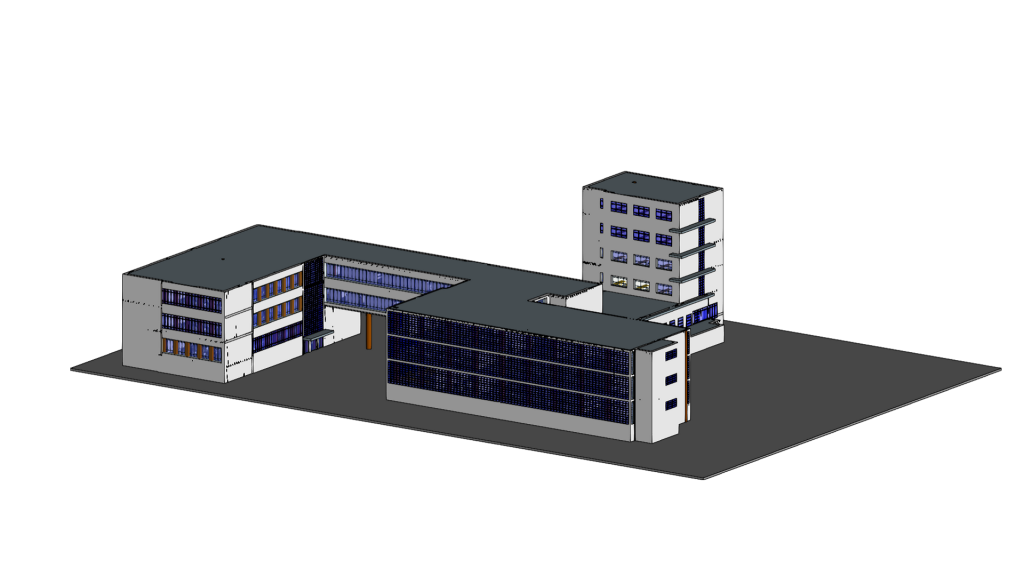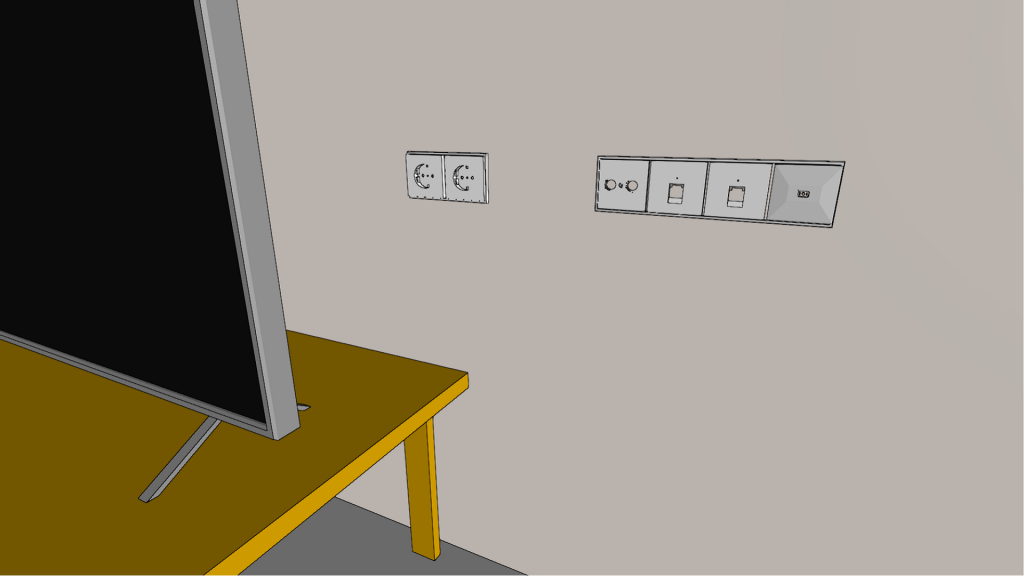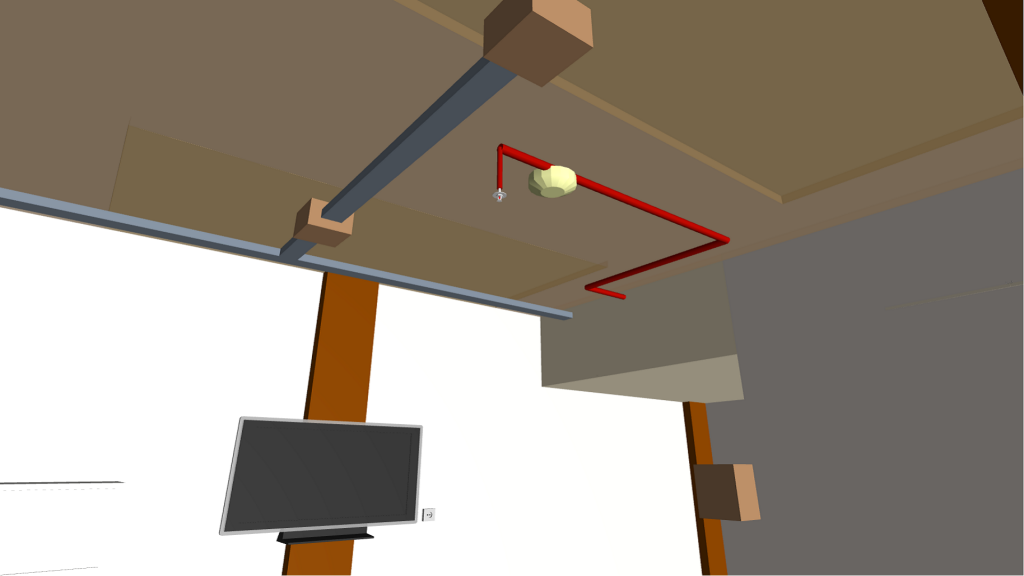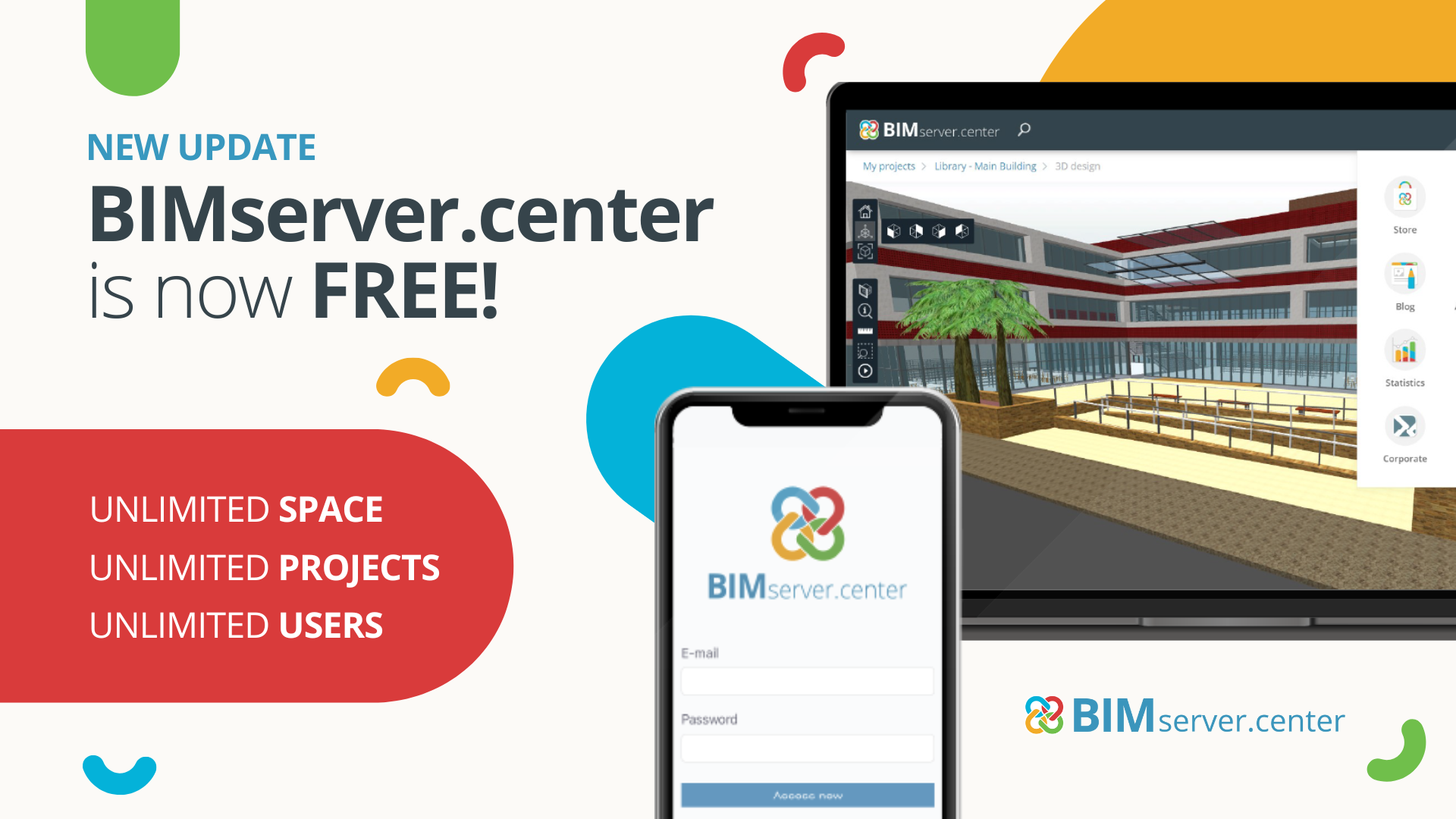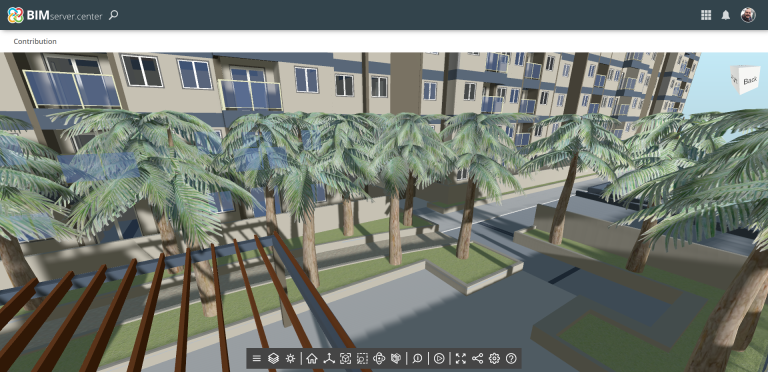The arrival of BIM (Building Information Modeling) is a revolution in the development of construction projects. But how will it affect telecommunications designers?
In this article we will see how BIM technology has created a change (for good) in the design of telecommunications infrastructure projects.
What does it mean to work with a BIM model?

Three-dimensional (3D) Architectural Model
The main characteristic that BIM technology includes is the creation of a digital (3D) model of the building. This virtual model is shared and generated from the information provided by all the project contributors involved in the development of building projects.
Therefore, the BIM project brings together all project data (not only geometric, but it also includes calculation data and supporting lists).
Three-dimensional (3D) design.

BIM model of telecommunications infrastructure.
First of all, it is essential to know that the concept of working with floor plans must be left behind, moving instead to three-dimensional work, so that the location of the elements can be created taking into account the spatial position. It will create a much more precise design since the elements will be placed in their exact position in the installation. In addition, the measurement of materials and calculations will be improved since the lengths of the electrical conduits will be more realistic.
Collaborative work.
Collaborative work will mean that information flows naturally among all project members. For example, with this we are able to locate our telecommunications sockets making the location known to the electrical project engineer, so that they can locate the electrical sockets in the immediate vicinity. Furthermore, we are able to determine the position of the pickup system so that the lightning rod installation takes into account the grounding for this system's elements, among other uses. And why not make a home installation knowing first-hand the equipment to automate?
In addition, given that everyone is working together on the same virtual model, the possible incidents (collisions) will be identified at an earlier stage. You can create the design of the telecommunications installation while also taking into account where the electrical conduits, water pipes and air conditioning ducts are situated.

Responsible design of electrical sockets in the immediate vicinity of telecommunications sockets 
Several disciplines sharing the virtual model
One step to point out is the update of the installation in the project phase. Imagine that there is a change somewhere in the project. In this case, the plans need to be modified and sent to the different collaborators that are affected. This leads to wasted time in carrying out the entire process, with the errors associated with version management. However, with BIM technology all you have to do is update the BIM model and you will be automatically notified in real time of the changes made.
Other additional uses.
Since the work is carried out with computer tools, the development of the project will allow you to keep track of the changes made without having to use external programs.
- 5 Interesting resources the augmented reality (AR) app by BIMserver.center brings
- Exploring the uses and benefits of augmented reality (AR) in the AEC sector
Most platforms for the development of BIM projects in the cloud have a mobile application, allowing us to receive real-time notifications of modifications made to the project.
Working with a virtual model allows us to make use of augmented reality in order to know the exact position of the elements. This allows us to, for example, perform maintenance on an installation or to search for where certain pipes run to make a modification.

BIM models augmented with BIMserver.center AR.
Technical implications for the telecommunications designer.
The telecommunications designer will not need a great deal of technical knowledge to begin to develop BIM projects. Perhaps it is the group that has the least involvement (or this is how it has been so far) with the rest of the disciplines in a construction project. The effort to be made will focus on the knowledge of these new tools that are emerging to carry out this task (Autodesk Revit, Allplan, Archicad, CYPE, ACCA Software …), and knowing how to take advantage of the potential offered by this technology.
Obviously, it may take longer to complete the project because of the accuracy required by BIM technology. However it is an effort that will lead to the more efficient creation of projects with fewer problems in the execution phase.
It is a change, and we are all reluctant to change, but we would benefit from making this transition in the long run for the obvious advantages that it entails.

